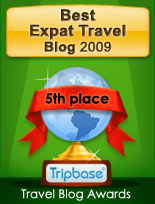
The Illinois River is still too full for barge traffic
This week daughter #1 and I had the pleasure of exploring Starved Rock State Park, voted by the citizens of this state as one of the seven wonders of Illinois. Entrance to the park is free.
Daughter #2 would have come with us, however she is, as Woody Allen so famously described himself, "two with nature."

1200 war ships went through these locks during WWII,
including 28 submarines
including 28 submarines
We went for a day of hiking along the Illinois River and to see the park's sandstone canyons that make it such a fun and pretty place to hike. The hiking patch for the state park describes the park as the place "where Illinois began."
Here is the late 1700's legend that gave Starved Rock State Park it's name:
Pontiac, a great Ottawa chieftain, had gone down to the southern part of Illinois to negotiate trade agreements with the French. During his stay he was murdered by an Illinois of the area. Word got back to his tribe and they wanted to avenge Pontiacs' death. So the Potawatomi and Fox, sub-tribes of the Ottawa people, paddled down river and attacked the Illinois village by Starved Rock.
For several days the attack raged on. By the end of the attack the Illinois people were reduced by half and the Potawatomi and Fox returned to regroup. The Illinois knew that in order to survive they had to leave the area. They decided to seek refuge on top of the rock. They climbed up to the summit of the rock hoping that the Potawatomi and Fox would by-pass them on their way southward. Unfortunately, the plan backfired and the Potawatomi and Fox surrounded the base. As the Illinois tried to get water by lowering buckets with rope the Potawatomi and Fox would cut the ropes or shatter the buckets with their arrows. They also climbed up on top of Devil's Nose and showered them with arrows. As the Illinois grew more desperate, some tried sneaking down, but they were murdered. The rest that were left on top starved. Since then, the rock has been known as "Starved Rock."


We chose to hike to St. Louis Canyon and back;
it's about four miles
it's about four miles
The park and it's environs are home to a fledgling colony of bald eagles that are attracted by the easy pickings of 2' long catfish which are visible everywhere surrounding the dam and in the creeks coming from Starved Rock's sandstone canyons. Each bald eagle comes back to the same nest every year.

Wildcat Canyon
 The Starved Rock Lodge was built by local men
The Starved Rock Lodge was built by local menin the Civilian Conservation Corps in the
National Park Rustic Style
 The CCC was a program started by
The CCC was a program started byU.S. President Franklin Delano Roosevelt
during the Depression to give
jobs and hope to millions of unemployed

People come from as far as Chicago
for Sunday Brunch on the veranda each week
for Sunday Brunch on the veranda each week



















































 Who links to me?
Who links to me?
